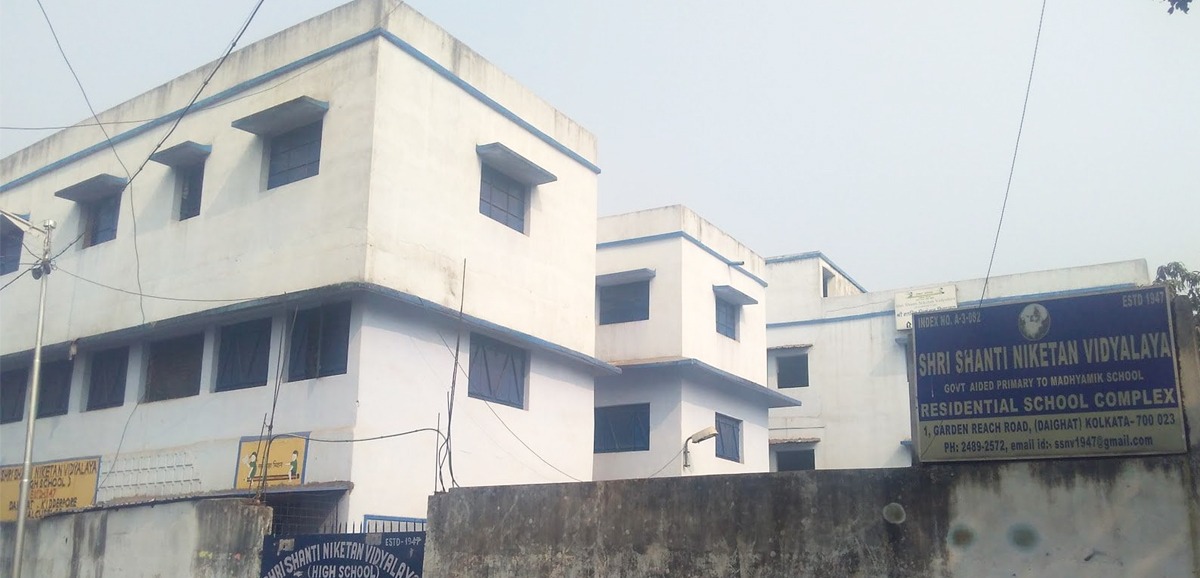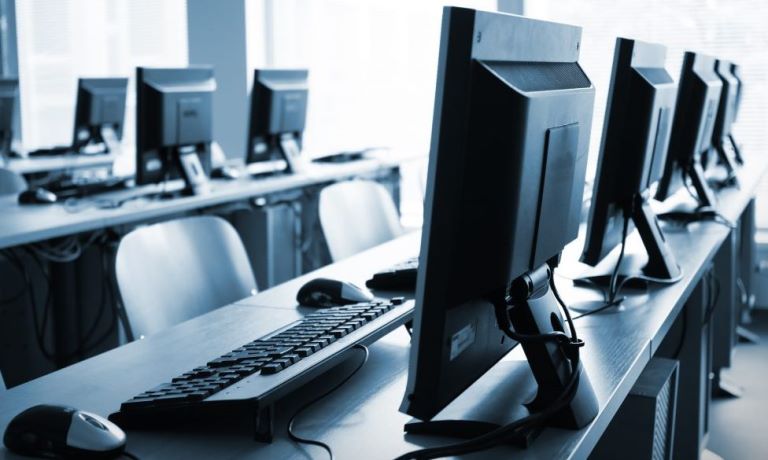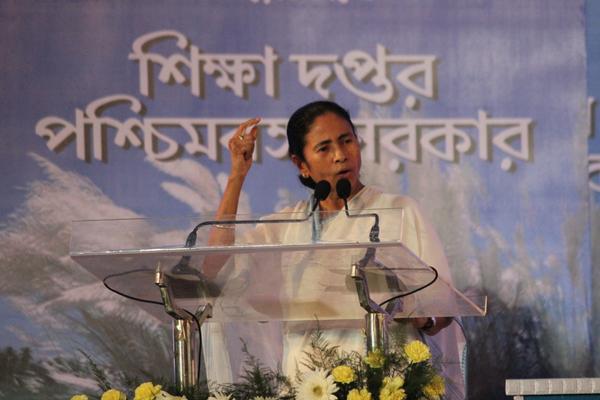Health Care, Education and Skill Development are core sectors where West Bengal made rapid progress in the last three years. The State, under the new Government had to revive and restructure the total infrastructure which had become almost non-existent. With continued efforts, the State made rapid progress by rebuilding the existing projects and creating newer avenues.
Health, Education, Skill development are also the focus areas for the Bengal Global Summit 2014, here is what the Government achieved in the last 3 years.
Health & Family Welfare
• Due to our initiatives, the Maternal Mortality Ratio (MMR) has decreased from 145 (2007-09) to 117 (2012) and Infant Mortality Rate (IMR) from 32 (2012) to 31 (2013).
• From only 6 operational Sick Newborn Care Units(SNCU) up to May 2011, 43 SNCUs have been made operational up to October 2014 and 16 more new SNCUs are also coming up. 285 Sick New Born Stabilization Unit (SNSU) are operational and 23 more such facilities are coming up. All 561 functional health units now have a New Born Care Corners (NBCC) and 100 more NBCC are being set up in phased manner. 25 Neonatal Units will be operational during 2014-15. NICU (Neonatal Intensive Care Unit) and PICU (Pediatric Intensive Care Unit) are functional in 9 and10 Medical Colleges, respectively.
• Paediatric Nephrology Unit is being set up in Medical College Hospitals and Paediatric Cardiology is being set up in 4 Medical Colleges.
• 140 Comprehensive Emergency Obstetric Care (CEmOC) facilities to manage obstetric complications and 531 Basic Emergency Obstetric Care (BEmOC) facilities will be made operational during 2014-15.
• Out of proposed 12 Mother and Child Hubs (MCH), 7 will be completed within 2014-15 and rest in 2015-16.
• The construction of 40 Super-speciality hospitals is expected to be completed during 2015-16.
• Out of 41 Critical Care Units (CCU), 20 are already functional and the rest 21 will be made operational within 2015-16. Construction of 5 Trauma care units (TCU) has been completed and construction of another 8 TCU and 9 Burn units (3 in Medical Colleges & 6 in District hospitals) is being taken up.
• 95 Fair Price Medicine Shops are functional and another 21 will shortly be made operational. During 2014-15, out of the gross sale value of Rs. 544 crores, the patients availed discounts of Rs. 364 crores.
• Fair Price Diagnostic Imaging Facilities and Dialysis Services under PPP has been established in 22 hospitals and another 26 hospitals will be covered by August, 2015.
• The drugs & equipments budget has increased from Rs. 80 (eighty) crore in 2010-11 to present Rs.403 crore.
• User charges for all investigations, medicine and beds have been waived in secondary hospitals.
• To cope with the shortage of Specialists, DNB (Diploma of National Board) courses have been opened in 6 (six) District Hospitals with addition of 60 (sixty) seats. DNB courses have also been planned in another 4 (four) District Hospitals. From 50,380 Beds in 2011, the Bed strength has increased to 74,507. 180 non-bedded PHC were upgraded to 10 bedded PHC, 144 BPHCs were upgraded to Rural Hospitals. 8 New health districts and 8 New District Hospitals have been created.
• As against allocation of Rs.2,211.06 crore in 2014-15, allocation of Rs.2,588.90 crore has been proposed for Health in 2015-16
Education
School Education Department
• During 2014-15, 155 new primary schools and 350 upper primary schools have been constructed. 584 New Primary Schools along with 1,319 New Upper Primary Schools are under construction. 206 schools have been upgraded from High to Higher Secondary and 104 Junior High Schools to High School.
• 11,430 schools were provided with two additional class rooms. Additional class rooms in another 14,175 schools are under construction. Classes will commence in 44 Model schools during the next academic year.
• 33,628 primary schools are being provided with electric connection.
• 99.36% students of primary schools (77, 76,133) and 98.18% students of upper primary schools (46,90,463) have been covered under mid-day meal programme. ‘Nirmal Vidyalaya Abhiyan’ has been taken up in elementary and secondary schools. Till now, more than 98% of the schools have been provided with toilet facilities.
• 1,151 para-teachers have been recruited to teach Santhali medium in primary schools in Jangal Mahal.
• In the 11 backward districts, construction of 105 Girls’ hostels, 401 integrated school buildings with hostels and 11 PTTIs has been taken up. Seventy one 50-bedded Girls’ hostels and 4 new school buildings have been completed.
• 218 new primary and 373 upper primary schools have been sanctioned and the construction work has been started.
• 25,309 bicycles have been distributed to Girl students of Bankura, Purulia and Paschim Medinipur districts.
• As against allocation of Rs.6, 884.50 crore in 2014-15, the new proposed allocatation is Rs.8,055.00 crore in 2015-16..
Higher Education Department
• The new universities at Panchanan Barma University at Coochbehar and Kazi Nazrul University at Asansol and Diamond Harbour Women’s University and Bankura University have started functioning in 2013-14 and 2014- 15 respectively. Two other new State aided universities, namely, the West Bengal University for Teacher Training, Education, Planning and Administration and Raiganj University will commence in next academic session. With this, the new State aided universities has gone up to six.
• The West Bengal Government is encouraging setting up of private universities. The Techno India University in North 24 Parganas and the Seacom Skills University in Birbhum have started and another five new private universities the Neotia University, JIS University, the University of Engineering & Management, Adamas University in North 24 Parganas and AMITY University will start in 2015-16.
• 45 new colleges are coming up in the State. New colleges at Salboni, Lalgarh, Nayagram and Jhargram in Jangalmahal, State’s first Hindi medium college at Banarhat, Jalpaiguri, New Town, Singur and Gaighata have already started. Another 15 Government Degree Colleges in un-served and under-served areas will start by August 2015. New Government Engineering Colleges are under construction at Coochbehar and Purulia.
• Due to these initiatives of the State Government, the Gross Enrolment Ratio (GER) has gone up from 12.80 in 2011-12 to 17.60 currently.
• A large number of posts in the teaching and nonteaching category have been created in the newly established universities and colleges.
• One of the remarkable achievements has been the reservation for OBC students in higher education under the West Bengal State Higher Educational Institution (Reservation & Admission) Act, 2013. 59,612 OBC category A & B students were admitted in the academic session of 2014 – 15, accounting for 10.60% of the total number of students admitted.
• As against allocation of Rs.342.95 crore in 2014-15, the proposed to allocation is Rs.391.00 crore to this department in 2015-16.
Technical Education and Training
• The State, in order to enhance the employment opportunities through skill development of the youth, has taken up an ambitious programme of setting up one Industrial Training Institute (ITI) in every Block of the State and one Polytechnic in every Sub-division.
• This Government in just three years has operationalized 43 new ITIs and additional 92 ITIs will come up this year. In order to use the expertise of private sector in skill development training, plan to set up 1000 ITIs in the Public Private Partnership has been taken in collaboration with the National Skill Development Corporation.
• 34 polytechnics have already been set up and 32 more Polytechnics are under construction.
• Apex Chambers like FICCI, BCCI and reputed industrial players like Samsung, Raymonds etc are importing skill training.
• The State has received the highest award in the All India Skill Competition two times in a row in 2013 and 2014.
• As against allocation of Rs.549.00 crore in 2014-15, allocation of Rs.647.00 crore has been made to this department in 2015-16.
Skill Development
• The state obtained first place for the first time in All India Skill Contest 2013.
• Under the leadership of the Hon’ble Chief Minister, West Bengal Skill Development Mission has been formed to develop technical and job-oriented skills.
• To ensure development of technical skills, the West Bengal State Council of Technical and Vocational Education and Skill Development Act, 2013 has been passed.
• One new ITI will be established in each block of the state. 38 new ITIs have already been established and seats have been increased by 3700. Apart from this, 88 new government ITIs are being established.
• As a result of Paschimbanga Swanirbhar Shahayak Prakalpo, nearly total 1 lakh 47 thousand nos. of groups have been benefited and subsidy of over 24 crore given in a scheme for reducing loans of the self-help groups
• Number of beneficiaries under the Swami Vivekananda Swanirbhar Karmasansthan Prokalpo, over the last two and half years is almost 78 thousand. Total outlay of project Rs. 1,715 crore Govt. grant Rs. 396 crore and employment generated in this project is for 2,93,827 people.
• Rs 8.12 crore has been spent to train producers of self-employment projects with the objective to develop the standard of their items. Through 91 special training camps, 2660 local unemployed youth have been given training in different fields with the objective to make the people of Jangalmahal self-sufficient through increase in their earnings.
• The work for construction of Training and Marketing Centre for the development of rural infrastructure at Nilgunj, Minakhan, Dhamakhali of 24 Pgs (N), Durgapur, Khandaghosh and Madhabdihi of Burdwan has been completed. Beside, work for construction of Training and Marketing Centres at New Town, Rajarhat of Kolkata, Ruipukur of Nadia, Phuljhor of Burdwan and the office of the District Collector of Paschim Medinipur is going on.
• Construction of hostels for girl students is going on in 25 polytechnic colleges. Various MOUs have been signed with Raymond, Bengal Chamber of Commerce & Industries, ILFS, FUCCU, ASSOCHAM, Security Sector Skill Development Council (SSSDC) and others which will train more than 1 lakh people on various sectors.
• Training under Skill Development Initiative Scheme (Modular Employable Skills): An additional 1,05,000 people have been trained since 2011 under Skill Development Initiative Scheme. Training of 13,500 people has been initiated in backward areas including blocks in the border areas.







